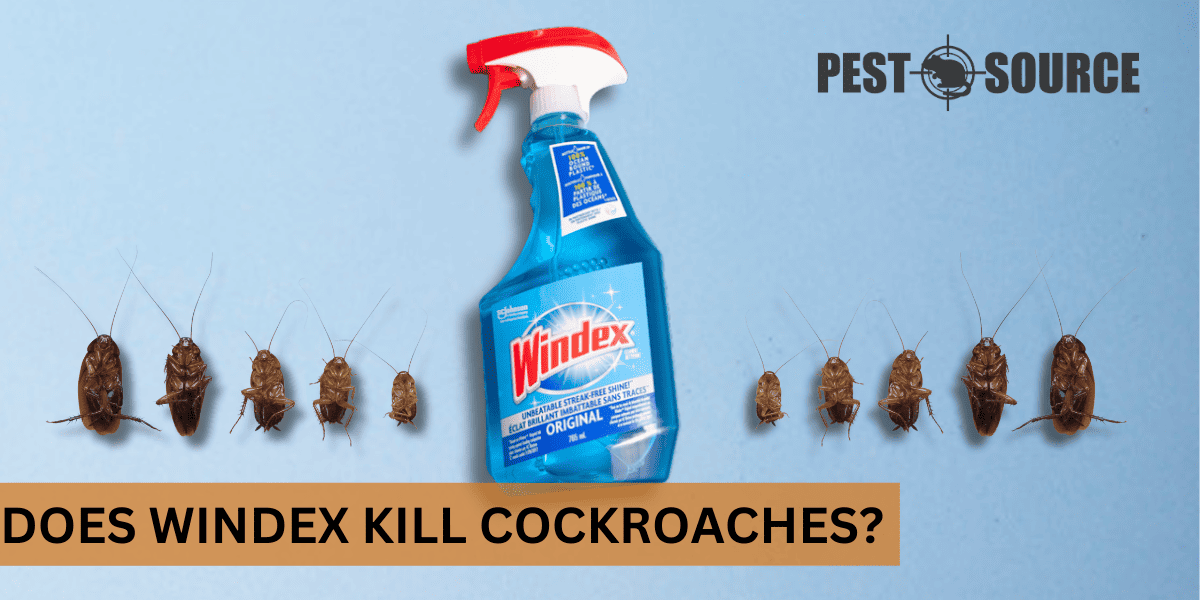Windex can kill cockroaches on contact due to its ammonia content, but it is not a long-term solution for an infestation. This article explores how Windex works against cockroaches and why other methods might be more effective for lasting control.
POINTS
- Windex contains ammonia, which can kill cockroaches and other pests on contact, but it is not a long-term solution for infestations.
- Natural alternatives like rosemary and orange oil can be effective and environmentally friendly options for repelling and killing pests.
- Using Windex or similar household cleaners as insecticides raises ethical considerations and can have psychological impacts on individuals who may prefer more humane methods.
- There are potential health and environmental risks associated with using ammonia-based products like Windex, especially with frequent use in homes.
- Professional pest control methods are specifically designed for pest management, making them more effective and safer for use around humans and pets compared to DIY methods with household products.
How Does Windex Affect Cockroaches?
Cockroaches are notorious for their resilience and are often a challenge to eradicate from homes. Many homeowners look for convenient solutions to combat these pests, and one question that frequently arises is: Does Windex, the common glass cleaner, kill cockroaches? Let’s examine the effectiveness of Windex as an insecticide for these unwelcome guests.
Chemical Composition of Windex and Its Impact on Cockroaches
Windex is primarily known for its streak-free shine on glass surfaces, but its chemical makeup can also affect insects. The key ingredient in many Windex products is ammonia, a compound that can be toxic to cockroaches. When sprayed directly on these pests, the ammonia disrupts their nervous system and can lead to their death. However, it’s important to note that Windex is not specifically formulated to kill insects, so its effectiveness may vary.
Temporary vs. Permanent Cockroach Solutions
Using Windex might provide immediate results by killing cockroaches on contact, but it’s not a long-term solution for an infestation. Cockroaches are highly adaptable and can quickly breed, so while Windex may kill some individuals, it doesn’t address the root of the problem—the nest. For enduring results, a comprehensive pest control strategy is necessary, one that includes sanitation, exclusion, and possibly professional intervention.
Effectiveness of Windex Against a Range of Household Pests
Now, let’s look beyond cockroaches and consider Windex’s efficacy against other common household pests.
Windex and Other Pests
Windex may also be fatal to pests like ants, bed bugs, and fleas when sprayed directly on them, due to the same principles that affect cockroaches. However, like with cockroaches, it doesn’t provide a lasting solution. Pests such as termites and mosquitoes require more specialized treatments, and Windex is unlikely to be effective against these insects.
Comparison with Other Household Cleaners such as Pine-Sol
When compared to other household cleaners such as Pine-Sol or hairspray, Windex shares a similar immediate knockdown effect due to its chemical ingredients. However, none of these products are designed as pest control agents, and their efficacy can be inconsistent. For instance, hairspray may immobilize insects by coating their wings or exoskeleton, but it won’t necessarily kill them.
Scientific Evidence
There is limited scientific study on the use of Windex as an insecticide. Most research on pest control focuses on products specifically designed for that purpose. Therefore, while anecdotal evidence suggests Windex can kill pests on contact, there is no substantial scientific backing to recommend it as an effective pest control solution.
So far, we’ve explored the use of Windex against cockroaches and other household pests, delving into its chemical composition and comparing its efficacy with other common cleaners. However, it’s clear that while it may offer a quick fix, Windex is not a substitute for a professional pest control approach.
Natural Alternatives and the Ethics of Using Windex for Pest Control
For those seeking a more humane and environmentally friendly approach to pest control, natural alternatives can be an effective option. Let’s explore some of these methods and discuss the ethical considerations of using chemical products like Windex for pest management.
Natural or Homemade Alternatives to Chemical Insecticides
Instead of reaching for Windex or other chemical cleaners, consider using natural oils and substances that repel cockroaches and other pests:
- Rosemary Oil: Known for its strong scent, rosemary oil can act as a natural repellent for cockroaches.
- Orange Oil: Contains d-limonene, which is toxic to cockroaches and can disrupt their waxy skin coatings, leading to dehydration and death.
These alternatives are not only safer for humans and pets but also contribute to a more sustainable approach to pest control.
Ethical Considerations and Psychological Impacts
The decision to use chemical methods like Windex for pest control raises ethical questions. Some people may experience discomfort or guilt from killing pests, especially in a manner that may cause suffering. It’s important to consider the psychological impact of pest control methods and to choose strategies that align with one’s ethical beliefs.
Limitations and Risks of Using Windex as an Insecticide
Using Windex as an insecticide comes with several limitations and risks:
- Ineffectiveness: Windex is not a long-term solution and may not be effective against large or deep-rooted infestations.
- Health Risks: Frequent use of ammonia-based products like Windex can pose health risks to humans and pets if inhaled or ingested.
- Environmental Impact: Chemical sprays can contaminate surfaces and contribute to indoor air pollution.
The Science Behind Household Products as Insecticides
Understanding why products like Windex can be lethal to insects requires a look at their chemical components and how these affect the physiology of pests.
Chemical Components and Their Effects on Pests
The chemicals in Windex and similar products can compromise the respiratory systems of insects or disrupt their nervous systems when applied directly. However, these effects are incidental rather than the result of a design focused on pest control.
Professional Pest Control vs. DIY Methods
While DIY methods using household products can seem convenient, professional pest control methods are specifically designed to target and eliminate pests. Professionals use products that are not only effective but also formulated to minimize risks to humans and the environment.



